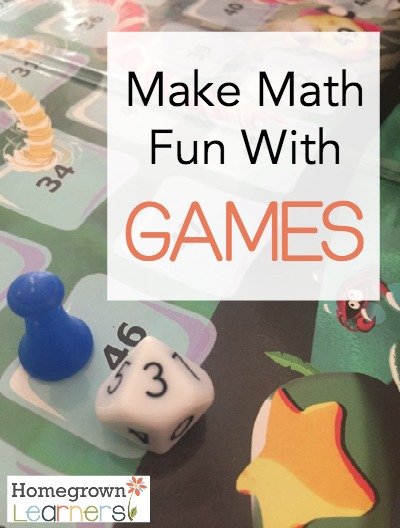Have you ever been guilty of math torture?
I confess - I have been.
When we first started homeschooling it never really occurred to me that we could play fun math games to cement learning.
Now, eight years into homeschooling, we are still very strict about math in our homeschool. It gets done each and every day (usually first thing), and we NEVER miss a day of math drills, either.
(Thank you, Saxon Math.)
Giving my children the gift of being 100% solid in their math facts is just something I'm going to do. Period.
I do know, however, that math is a lot more engaging for kids when you provide fun games for them to play. Math games help with mental math, speed, confidence, and just a LOVE of math in general.
I have been compensated by Logic Roots to write this post. I never review items we have not first used and loved. All opinions expressed are my own.
Our Traditional Favorite Math Games for Kids
We've enjoyed many games over the years, and before I tell you about the newest game that has caught our eye, let me highlight just a few that stick out as our favorites over the years:
- Mega Fun Card Game Math - all you need is a deck of cards and this book - tons of fun!
- Math Dice - a set of these dice can bring hours of math practice and fun - we use them a lot as a family
- 24 - this game requires some serious thinking and can be used with ALL AGES (I first learned about it in my daughter Challenge I class)
- Yahtzee - this classic game is ALWAYS fun, and helps practice addition and multiplication
- SKIP-BO - a seriously FUN math game
A Fun Addition Game for Kids
Now that I am tutoring the littlest ones in our Classical Conversations group, I'm thinking about playing math games much more.
And I'm also learning something about math games: you are never too old to play them!
A new game I've been playing with some of my younger friends has been Ocean Raiders.
(And just a secret for you -- a certain 11 year old in my house asks me to play a lot, too... because we've come up with ways to make the game harder for him!)
Ocean Raiders is very simple to play.
Players roll the die to start. On their first roll they put their game piece on the number they roll. On subsequent rolls they add the number they rolled to the number they are on. The object is to get to the treasure (at #49). Players sometimes advance quickly forward or backward (a la Chutes & Ladders) to add a twist to the game.
I found that Ocean Raiders helped children in 1st grade and above with their mental math skills. The guys I played with were adding in their heads, but Logic Roots also provides slates to write on so children can figure the answers that way, too.
The rules were VERY simple and game play was successful from the minute I opened the box. That's important for the younger ages, because too many rules bog them down.
The game is visually appealing and engagement comes from its simple premise and design - all achieving the goal of making math fun for kids.
Two of my little friends told me they had a great time playing the game -- and they gave it 8.7 and 9 stars (out of 10). These are bright little boys, so I considered that high praise!
The really fun thing was that after THEY played, then the big boys came in and wanted to play. They played a quick round of addition, then they went BACKWARDS from 49 to 0 using subtraction, which made things a little harder for them.
About Ocean Raiders and Logic Roots
Ocean Raiders is recommended for grades 1 and up. It is provides ABUNDANT practice with the following skills:
- Addition
- Number Recognition
- Number Sequencing
- Subtraction
There are detailed instructions in the box, but they also can be found by scanning the QR code in the instruction book or by visiting the Logic Roots website.
There are MANY other math games (which I will be telling you about in the coming months) from Logic Roots, too. I encourage you to check them out via their website - and their games are also available through
Connect with Logic Roots on Twitter and Facebook to learn more about making math fun for kids!
AND --- they have a MATH BLOG. Good stuff! (Check out some of their amazing LEGO math ideas.)
Do your kids like math? Do you play games to make it more fun? Leave me a comment and let me know how math goes in your house!









